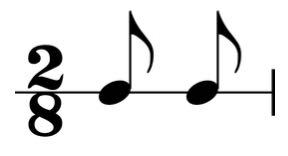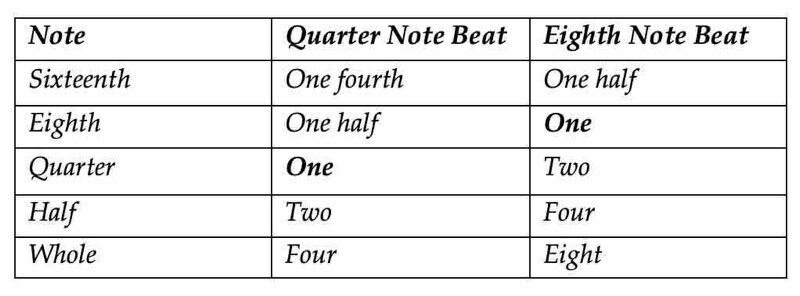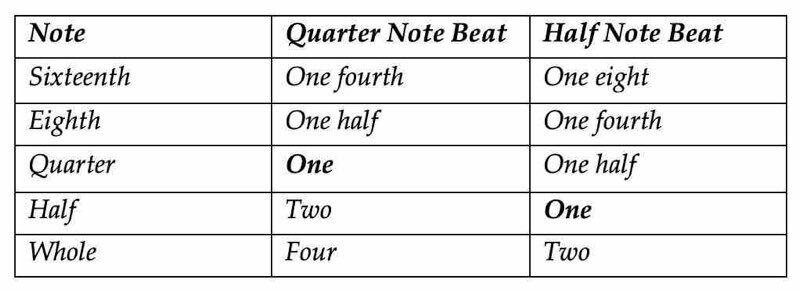Day 8: More Time Signatures
So far, we’ve mostly seen meters where the pulse is measured in quarter note beats. In this lesson, we take a look at meters (and their time signatures) where either the eighth note or the half note is the beat.
The Eighth Note Beat
We’ve learned already that when the pulse consists of quarter note beats, the bottom number of the time signature is 4. Now, when the pulse consists of eighth note
beats, the bottom number of the time signature is 8.
As always, the top number of the time signature shows us the number of beats per measure. The bottom number shows us what each of those beats are worth–in this case, eighth notes. So, the time signature two-eight means that we get 2 eighth note beats in every measure
.
Similarly, these are 3 eighth note beats per measure, and 4 eighth note beats per measure:
Three-eight and four-eight time signatures
The table here shows how the note values relate to different kinds of beats. The quickest way of calculating these proportions is to keep in mind which note value is assigned the value of 1.
Table of eighth note beats
The sixteenth note, for example, is one fourth of a beat if the beat is a quarter note. In other words, when the quarter note equals one
, the sixteenth note equals one-fourth
. But when the beat is an eighth note, then that same sixteenth note becomes half a beat. That is, if the eighth note equals one
, the sixteenth note equals one-half
.
The Half Note Beat
Now let’s look at meters where the pulse consists of half note beats. In the time signature, half note beats are indicated with a number 2 at the bottom.
For example, this is three-two meter.
The bottom number is 2 so the meter consists of half note beats. How many half note beats per measure? According to the number on top: 3. So this time signature is 3 half note beats per measure
.
Similarly, these are 2 half note beats per measure and 4 half note beats per measure:
Two-two and four-two time signatures
Just as before, our note durations acquire a different value depending on the beat. That means if the quarter note equals one beat
, then it takes two eighth notes to fill one beat. But if the half note equals one beat
, then it takes four eighth notes to fill one beat.






